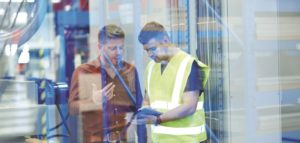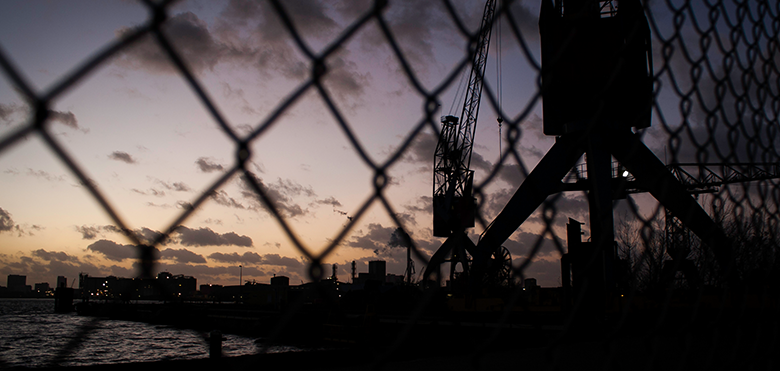Boosting operational efficiency with network cameras: three levels of functionality
Video surveillance technology can go far beyond physical security. It can address everything from improving people’s safety and monitoring processes to maximizing operational efficiency.
Optimizing processes for maximum productivity – or ‘operational efficiency’ – is a major focus for industrial operations in particular, given the costly consequences of downtime halting producing, manufacturing, or processing operations. Clever use of video surveillance solutions not only improves on-site security in these sectors, but it can also minimize downtime, provide situational awareness, and enable predictive maintenance. After all, network cameras add another level of transparency to help you understand precisely what is happening with your operations.
It goes without saying that all industrial facilities require secure, high-quality cameras that can operate in harsh conditions and remain secure against cyberattacks. However, you should also consider how to deploy these high-quality cameras for maximum effect. By integrating surveillance solutions within your control system architecture to different degrees, you can achieve varying levels of functionality and therefore, varying degrees of improved operational efficiency.
Level one: Enabling visual verification
At the least complex end of the spectrum, you can employ network cameras to simply get a live view of different parts of operations in action.
In a manufacturing facility, for example, video surveillance can enable operators to see what is happening on the other side of the production floor as components, like headlights or engine blocks, are produced.
In the energy industry, network cameras might be deployed at a large hydroelectric facility to offer visual verification on the state of the dam. This allows operators to keep an eye on issues such as whether there is debris near the hatches, or whether ice on the lake surface is stable or breaking up.
Level two: Adding real-time support for operators
Cameras deployed to boost operational efficiency should also be able to be integrated into your existing process control system or cloud services. That integration is key to providing the operator with a quick, relevant overview of what is happening.
This integration is what makes it possible to go one step further with video surveillance functionality. When the process control system, and equipment connected to it, flags an anomaly with an alert, integrated cameras can immediately and automatically move to capture the area of interest. As a result, you get access to a real-time visual to evaluate the situation and act on the alert. This is a significant value add, enabling you to quickly identify and manage any issues which may slow or stop operations.
Integrating cameras with the existing process control system and all the sensors within it creates an advanced data-driven sensory network so you can get a deeper understanding of operations. The cameras complement traditional sensors with added visual input, so data from sensors can be added as overlay (data in video view) in the visual provided by the camera. For example, if sensors connected to the system feed in data that flags one of the machines has a higher revolutions per minute (RPM) than usual, the integrated camera will automatically move to watch that specific machine and allow the operator to assess the situation visually before acting on the information. The operator gets the visual view of the machine, but it’s supplemented with technical information from the sensors.
Within a hydroelectric dam, for instance, you can integrate network cameras to monitor different areas crucial to production. If an incident occurs, such as a turbine stopping or a dam hatch opening when it shouldn’t, an alert will trigger the camera to automatically move to the relevant area so you can take a closer look.
Level three: Making the most of analytics
You can also take process monitoring further. Intelligent analytics can be added to uplevel your use of cameras in industrial operations. This is the third level of functionality when considering how video surveillance can improve operational efficiency.
With analytics, you can transform video, audio, and other data into actionable insights that help you to maximize performance in real-time. You can respond immediately to what’s happening in your operations, avoid unnecessary downtime, and enable safer operations.
For example, by deploying visual cameras with intelligent analytics within a manufacturing facility, operators can receive an alert if an employee enters a restricted area, gets too close to moving machinery or isn’t wearing the appropriate safety gear. This not only provides an extra safety precaution but also keeps operations running. Armed with this information, operators can address the situation before an accident occurs or the production line is stopped.
Beyond keeping staff out of harm’s way, adding intelligent analytics ensures the best use of personnel. For instance, in a hydroelectric dam, you can rely on analytics to monitor water levels and ensure that if that level exceeds or dips below a specific measurement, operators will be quickly informed with an alert so they can take a closer look. In this way, the right expertise can be deployed to stop a disruption before it occurs.
Learn how global automotive supplier HELLA achieved level three – embedding analytics to boost lean manufacturing at its assembly lines
Greater functionality enables greater proactivity
Each of these three varying levels of functionality helps to make operational efficiencies possible, though they provide different benefits.
With visual verification, you can inspect processes and remotely monitor staff to ensure safe working practices are followed and resources are used effectively. Building on this with greater integration that enables real-time alerts ensures operators can be more proactive, with notifications helping them to focus their time where it matters. Taking this to the next level with intelligent analytics adds yet more functionality. It enables predictive maintenance so operations can keep running, as well as data collection so patterns can be analyzed to maintain the highest levels of productivity.
The more integrated your video surveillance solutions are, the more proactive and resource effective you can be. As one example, consider the process of packaging rolls of paper in a paper manufacturing mill. Network cameras can provide visual verification so operators can spot if a roll has not been securely packaged. Yet deploying analytics ensures any rolls with insufficient packaging are not only spotted immediately but automatically flagged so they can be re-packaged quickly, optimizing operational efficiency within the mill.
Level up your video surveillance, level up your operational efficiency
When looking to boost operational efficiency in critical infrastructure or other industrial operations, you should consider where your organization currently sits within these three levels. By moving to more integrated surveillance solutions, you could quickly become even more resource effective and efficient in the short and long-term.
Find out how you can boost your operational efficiency with our secure surveillance solutions:



